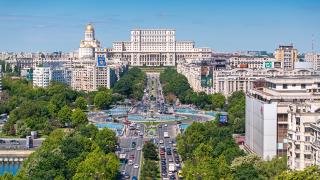Plagued by oversupply, soaring energy prices and a lack of competitiveness overseas, 2021 was a challenging year for the Egyptian cement sector. However, following government intervention, there is a light at the end of the tunnel as cement prices begin to rise, post-pandemic demand picks up, and balance sheets return to better health. By ICR Research, UK.
The Egyptian economy expanded by 3.3 per cent in 2021, compared to 3.6 per cent in 2020 and 5.6 per cent in 2019, according to the IMF. Growth of 5.9 per cent is forecast for 2022, followed by a five per cent advance in 2023.
With a population of just over 100m, making it the most populated Arab nation, many of Egypt’s cities have become overcrowded with the capital Cairo expected to see its 22m population double by 2050. To address this issue, government spending on infrastructure has risen considerably in recent years, including the US$40bn New Administrative Capital being constructed 34km east of Cairo and expected to house 6.5m residents. The company overseeing its construction, Administrative Capital for Urban Development (ACUD), is 51 per cent owned by the Egyptian military and 49 per cent owned by the Ministry of Housing. Other megaprojects include the EGP4.5bn (US$243.5m) high-speed rail link from Cairo to Aswan, and from Luxor to Hurghada, upgrades to the Cairo Metro, a new rail line to Sudan, and the new Suez Canal free zones. According to GlobalData, construction demand in Egypt is expected to rise by 9.6 per cent each year in 2020-24.
